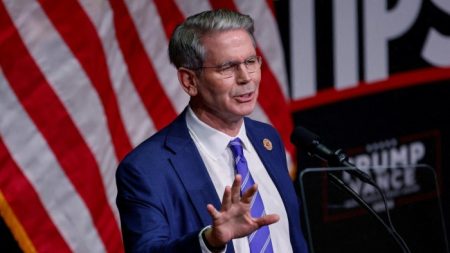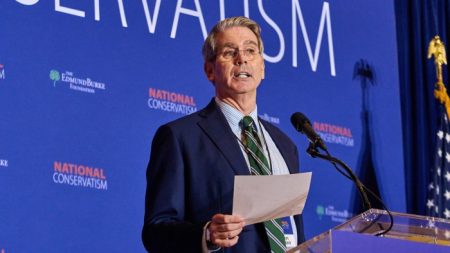Editor’s Note: We’re making some updates to this newsletter and will be going on a hiatus starting tomorrow. In the meantime, you can stay up to date on the latest business news with CNN’s Business Nightcap newsletter.
Small and mid-sized businesses are struggling to survive. Many have already gone under water this year.
There were 346 companies that filed to either liquidate or re-organize through bankruptcy in the first six months of 2024, the highest half-year level since 2010 when 467 filed, according to data from S&P Global Market Intelligence. Just last month, 75 companies filed for bankruptcy, which was the biggest monthly total since early 2020.
The majority of businesses that have gone belly up are considered “consumer discretionary,” a broad category of firms that sell goods or services that people don’t need every day, such as restaurants, clothing stores and car dealerships. Most of the businesses are also considered small or mid-sized, economists and investors tell CNN.
Interest rates are at their highest level in nearly a quarter century, which is squeezing not just for consumers, but also businesses that rely heavily on borrowing to purchase equipment, replenish inventory, meet payroll and/or expand operations, to name a few key reasons. Access to credit is especially crucial for small, private businesses that aren’t able raise money through financial markets. It’s also gotten harder for them to even take out a business loan to begin with these days. A recent Federal Reserve Bank of Kansas City survey of 170 small businesses showed that “credit standards tightened for the tenth consecutive quarter and credit quality decreased.”
“Small companies are more at risk and more sensitive to higher borrowing costs,” Matt Rowe, head of portfolio management and cross asset strategies at Nomura Capital Management, told CNN. “The increase in implied and actual defaults that the S&P report is referencing is largely coming from the smaller cap part of the world.”
Consumer demand has also been underwhelming so far this summer, according to the Institute for Supply Management’s latest survey of businesses that sell any kind of service. The latest spending data and comments from retailers in recent months have also demonstrated that US consumers aren’t splurging this summer, unlike last year, and are instead spending more cautiously.
That’s troubling because the summertime is a crucial season for many kinds of service-providing businesses. Last month, an arcade and a hotel management company filed for bankruptcy, according to the S&P Global report, also citing “supply-chain issues” as another possible reason behind the run-up in business bankruptcies.
But this might not be an omen for future economic pain, it could just be an unwinding of pandemic-related distortions in the economy.
“This is probably more a story of normalization than anything,” Josh Jamner, investment strategy analyst at ClearBridge Investments, told CNN. “There were a number of programs out there to support small businesses during the depths of the pandemic, and there were relatively fewer filings than usual in 2021 and 2022.”
Rising corporate bankruptcies could just reflect a lot of churn occurring in Corporate America, Jamner said. New business applications took off in 2020 and have remained elevated ever since, he said. Last year, there were a record 5.5 million applications to start a new business, though that pace has slowed so far in 2024, according to government statistics.
“As businesses are closing, we’re still also seeing plenty of new ones being formed,” he added.
The Federal Reserve has kept interest rates at a 23-year high for about a year now in a bid to stamp out inflation. In good news for borrowers, inflation resumed a downward trend in the spring after stalling early this year, which is widening the path for the Fed to finally begin lowering borrowing costs sometime this year.
Fed officials expect to cut interest rates at least once this year, which wouldn’t provide huge immediate relief, but it would still be significant.
“Starting to cut rates is just as important for businesses and consumers as how much rates will ultimately be cut because it is setting in motion rate cuts, which is a good thing,” Reena Aggarwal, director of the Georgetown University Psaros Center for Financial Markets and Policy, told CNN. “There’s an important psychological impact of that because businesses won’t have to worry about rates going up.”
Small-cap stocks gained ground last week after the latest Consumer Price Index came in weaker than expected, bolstering rate-cut prospects.
Most banks offer free checking if, for instance, customers have their paycheck direct deposited or they maintain an average minimum balance, reports my colleague Jeanne Sahadi.
The majority of people with checking accounts (73%) take advantage of the option, according to a 2023 Bankrate.com survey.
But if regulatory costs go up for banks, free services like checking may go away, at least if they follow Chase’s lead. Marianne Lake, the head of Chase Bank, told the Wall Street Journal last week that Chase might stop offering free checking and other free banking services.
“Consumer banking is predicated on banks providing services for free to consumers such as checking accounts, debit cards and electronic bill paying. The model then relied on banks being able to recoup those costs elsewhere in the consumer banking business, such as with debit interchange fees, overdraft fees, late fees and higher interest rates,” Jaret Seiberg, financial services analyst at TD Securities, wrote in an analysis of Lake’s comments.
Read more here.
Monday: Earnings from Goldman Sachs and BlackRock. Federal Reserve Chair Jerome Powell participates in a discussion. San Francisco Fed President Mary Daly delivers remarks.
Tuesday: Earnings from UnitedHealth, Bank of America, Morgan Stanley, Charles Schwab, PNC and State Street. The US Commerce Department releases June figures on retail sales and May data on business inventories. The US Labor Department reports export and import prices in June. The National Association of Home Builders releases its NAHB/Wells Fargo Housing Market Index for June. Fed Governor Adriana Kugler delivers remarks.
Wednesday: Earnings from Johnson & Johnson, US Bancorp, Kinder Morgan, Discover, Las Vegas Sands, Equifax, Northern Trust, Citizens and United Airlines. The UK’s Office for National Statistics releases June inflation data. The US Commerce Department releases June figures on housing starts and building permits. The Federal Reserve releases June data on industrial production. Richmond Fed President Tom Barkin delivers remarks.
Thursday: Earnings from Netflix, Novartis, Abbott Laboratories, Marsh & McLennan, Blackstone, Infosys, Cintas, M&T Bank, Nokia, Domino’s, American Airlines and ManpowerGroup. The European Central Bank announces its latest interest rate decision. Fed officials Lorie Logan, Mary Daly and Michelle Bowman deliver remarks.
Friday: Earnings from American Express, Schlumberger, Haliburton, Fifth Third Bancorp and AutoNation. Fed officials John Williams and Raphael Bostic deliver remarks.
Read the full article here













